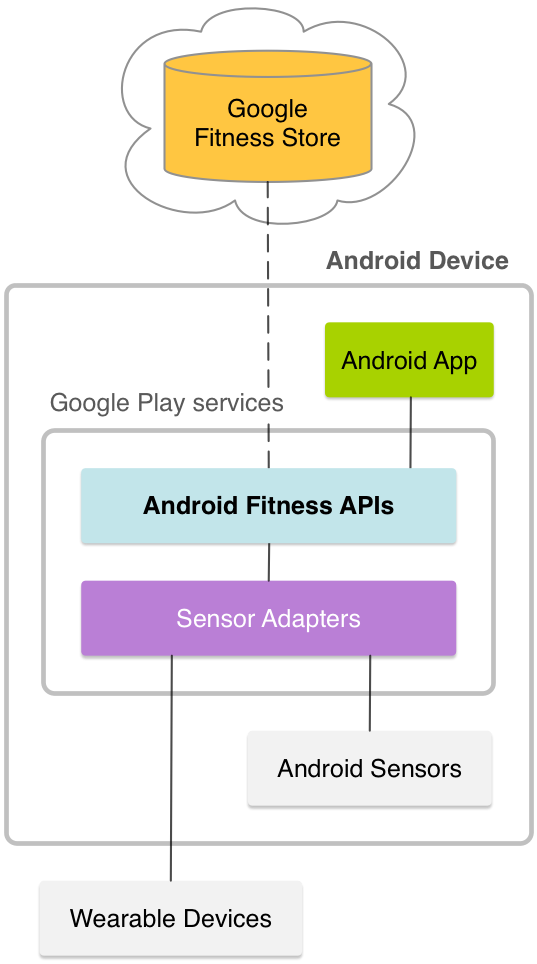ממשקי Google Fit API ל-Android הם חלק משירותי Google Play. ממשקי Google Fit API נתמכים ב-Android 4.1 (רמת API 16) ואילך. באמצעות ממשקי ה-API האלה, האפליקציה יכולה לבצע את הפעולות הבאות:
- קריאת נתונים כמעט בזמן אמת ונתונים היסטוריים, כולל נתונים ממכשירי Bluetooth עם צריכת אנרגיה נמוכה (BLE).
- הקלטת פעילויות.
- משייכים נתונים לסשן.
- קבעו יעדי כושר.
קריאת נתוני חיישנים
אם האפליקציה שלך מספקת מידע על פעילות המשתמש, כמו הצעדים היומיים שלו, היא יכולה לעזור להציג נתונים כמעט בזמן אמת לגבי התנועות שלו. באמצעות Sensors API תוכלו לקבל גישה למקורות של נתונים גולמיים שמכילים את המידע הזה. הנתונים יכולים להגיע מחיישנים שזמינים במכשיר שמופעל באמצעות Android, וגם מחיישנים במכשירים נלווים, כמו גאדג'טים לבישים.
תיעוד נתונים
אם האפליקציה שלכם צריכה לאסוף, לאחסן ולסנכרן נתונים לגבי הפעילות הפיזית של המשתמש, תוכלו להשתמש ב-Recording API. ה-API הזה מאחסן נתוני בריאות וכושר באמצעות המינויים. האפליקציה שלכם מציינת סוג אחד או יותר של פעילויות לתיעוד. לאחר מכן, אפליקציית Google Fit שומרת נתונים מהסוגים שצוינו ברקע, גם כשהאפליקציה לא פועלת. בנוסף, המינויים האלה ישוחזרו כשהמערכת תופעל מחדש.

נתונים היסטוריים
אם רוצים לאפשר למשתמשים לראות נתוני כושר מפעילויות קודמות, אפשר להשתמש ב-History API. ה-API הזה מספק גישה לנתוני הבריאות ואיכות החיים ההיסטוריים, ומאפשר לאפליקציות לבצע פעולות בכמות גדולה כמו הוספה, מחיקה וקריאה של נתונים.
סשנים
נתוני כושר יכולים להועיל כשלעצמם, אבל הנתונים שימושיים יותר כשמשלבים אותם עם מידע נוסף על פעילות המשתמש. ה-Sessions API מקבץ נתוני בריאות ואיכות חיים יחד עם מטא-נתונים מסוימים, ביחידות שנקראות sessions. סשנים מייצגים מרווח זמן שבו המשתמש מבצע פעילות כושר.
הצגה והגדרה של יעדים
האפליקציה יכולה לעזור לך לעודד משתמשים על ידי השוואה בין פעילות הכושר שלהם לבין היעדים שהם הגדירו. בעזרת Goals API תוכלו להציג למשתמשים את יעדי הבריאות והכושר שהם יצרו.

